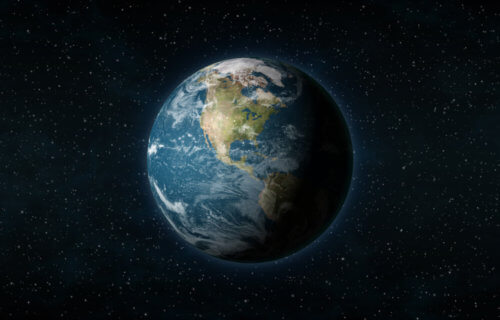WASHINGTON — Future generations may never see a polar bear according to scientists and, apparently, now they may never see blue lakes again as well. A new study from researchers at the American Geophysical Union (AGU) concludes that if global warming continues along its current path, lakes are likely to shift in color from blue to green-brown. The changing colors are a sign of poor ecosystem health.
Lakes change hues for a number of reasons, from algal growth to runoff of sediments. However, the new study finds that other factors such as air temperature, frequency of rainfall, lake depth, and elevation also influence the water’s color.
One-third of the world’s lakes are true blue. They are often deep areas in cool, high-latitude regions where it often rains and snows. Green-brown lakes, on the other hand, comprise 69 percent of all lakes and are located along coastlines and other dry regions.
The study authors used 5.14 million satellite images from 85,360 different lakes and reservoirs around the world to come to their findings. The photos were taken from 2013 to 2020. Since lake color can change seasonally, the interactive map they drew measured the most frequent lake color over the seven-year span.
“No one has ever studied the color of lakes at a global scale,” says study author Xiao Yang, remote sensing hydrologist at Southern Methodist University, in a media release. “There were past studies of maybe 200 lakes across the globe, but the scale we’re attempting here is much, much larger in terms of the number of lakes and also the coverage of small lakes. Even though we’re not studying every single lake on Earth, we’re trying to cover a large and representative sample of the lakes we have.”
What regions will this shift impact?
The research team also studied the effects of warming temperatures on water color if climate change persists. They found that the current trajectory the world is heading in will lead to a reduction in blue lakes. The most notable blue lakes are found in the Rocky Mountains, northeastern Canada, northern Europe, and New Zealand.
“Warmer water, which produces more algal blooms, will tend to shift lakes towards green colors,” says study author Catherine O’Reilly, an aquatic ecologist at Illinois State University. “There are lots of examples of where people have actually seen this happen when they studied one individual lake.”
For instance, the North American Great Lakes are experiencing a rise in algae in warming lakes that contributes to a green color. In the Arctic, lakes are showing “intensifying greening,” adds Yang.
Changes to water color has important implications for humans. Lakes or other bodies of water that turn green likely will have a decrease in water quality. The team suspects it will cost more to filter the water and make it drinkable. Additionally, if the water is no longer inhabitable for fish and other aquatic species, the lake’s ecosystem might change drastically. For people that are used to swimming in lakes such as in Sweden and Finland, the shift in color could affect cultural activities.
“Nobody wants to go swim in a green lake,” says O’Reilly, “so aesthetically, some of the lakes that we might have always thought of as a refuge or spiritual places, those places might be disappearing as the color changes.”
The study is published in the journal Geophysical Research Letters.

